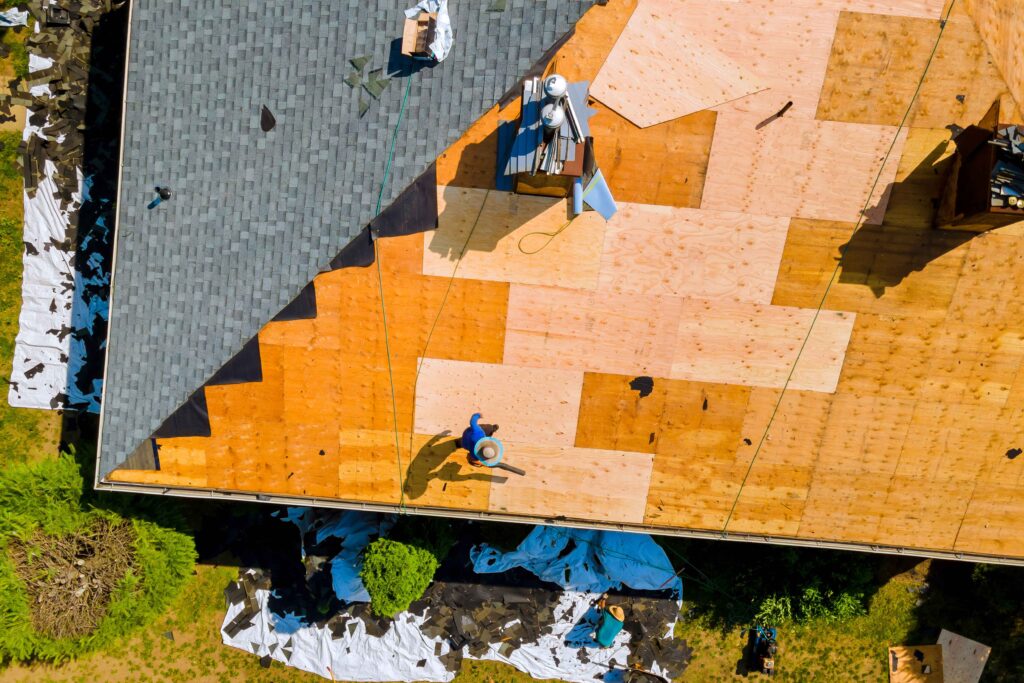- Serving London and surrounding areas
- Work for us

A well-maintained roof is essential for protecting your home from the elements — especially in the UK, where heavy rain, strong winds, and fluctuating temperatures can take a toll on roofing materials. While some roof upkeep tasks are best left to professionals, many basic maintenance steps can be carried out by homeowners themselves with a bit of care and attention. In this guide, we’ll walk you through practical DIY roof maintenance tips and explain when it’s time to call in a professional roofer to handle more serious issues.
Neglecting your roof can lead to:
Leaks and water damage
Structural issues
Mould and damp
Expensive emergency repairs
By performing regular checks and basic upkeep, you can extend the life of your roof and spot problems early — especially important in the UK, where weather conditions vary dramatically.
Use binoculars to visually inspect your roof from the ground in spring and autumn. Look for:
Missing or broken tiles or slates
Moss build-up
Sagging areas or uneven surfaces
Rusted or loose flashing
Signs of water stains or rot on fascias and soffits
Tip: Do this after major storms too, especially with high winds.
Blocked gutters can cause water to overflow and damage your roof or walls. Clean them out at least twice a year, or more often if you have nearby trees.
Wear gloves and use a gutter scoop or trowel
Check downpipes for clogs
Run water through to ensure proper drainage
Safety Tip: Use a stable ladder and work with a partner if possible.
In the UK’s damp climate, moss can quickly take hold, especially on north-facing roofs.
Use a long-handled brush or roof moss scraper
Apply a moss-killing biocide designed for roofing
Avoid pressure washing – it can damage tiles
Pro Tip: Apply treatments on a dry day with no rain forecast for at least 48 hours.
Signs of roof problems often appear inside your home first. Head up to your loft and look for:
Water stains or damp patches on insulation or rafters
Light peeking through (suggesting holes or cracks)
Musty smells (indicating mould or rot)
Trees can drop leaves into your gutters and rub against your roof tiles during windy weather. Trim back any branches that hang too close to your home.
If you’re confident working at height and know how to do it safely, you may replace a few broken tiles yourself. Always:
Use appropriate PPE
Work with someone else present
Use a safety harness or roof ladder if needed
Note: If your roof is steep, fragile, or high up, skip this — it’s not worth the risk.
While some tasks are safe for DIY, others require experience and equipment only professionals have. Here’s when to contact a roofing expert:
Water damage can spread quickly. If you see internal stains, damp patches, or mould, it’s time to call in an expert before the problem worsens.
Storm damage can be unpredictable and dangerous to fix yourself. Pros will not only replace what’s missing but also check for hidden issues.
Older roofs need more attention, and some materials may be nearing the end of their life. A professional can assess whether it’s time for a partial or full replacement.
A sagging roof can indicate timber rot or foundational issues. This is serious and needs immediate professional inspection.
If you’re unsure, unconfident, or simply uncomfortable with heights, it’s always better to call a roofer. Your safety is not worth the risk.
When hiring a roofer in the UK, always:
Look for members of recognised trade associations (like NFRC or TrustMark)
Check reviews and ask for references
Request a written quote and contract
Ensure they carry liability insurance
DIY roof maintenance can save you money and help catch minor issues before they escalate — but only when done safely and correctly. Know your limits, and don’t hesitate to call a professional if you’re unsure or dealing with anything beyond basic upkeep.
If your roof needs inspection or repair, reach out to a qualified local roofer for expert advice and peace of mind.
Monday to Sunday: 6:00 AM – 8:00 PM (Open Daily)
Subscribe to our newsletter for the latest updates and offers.
© [2010 [A&A Roofing]. All Rights Reserved. Designed By Spectrum Media Solutions.